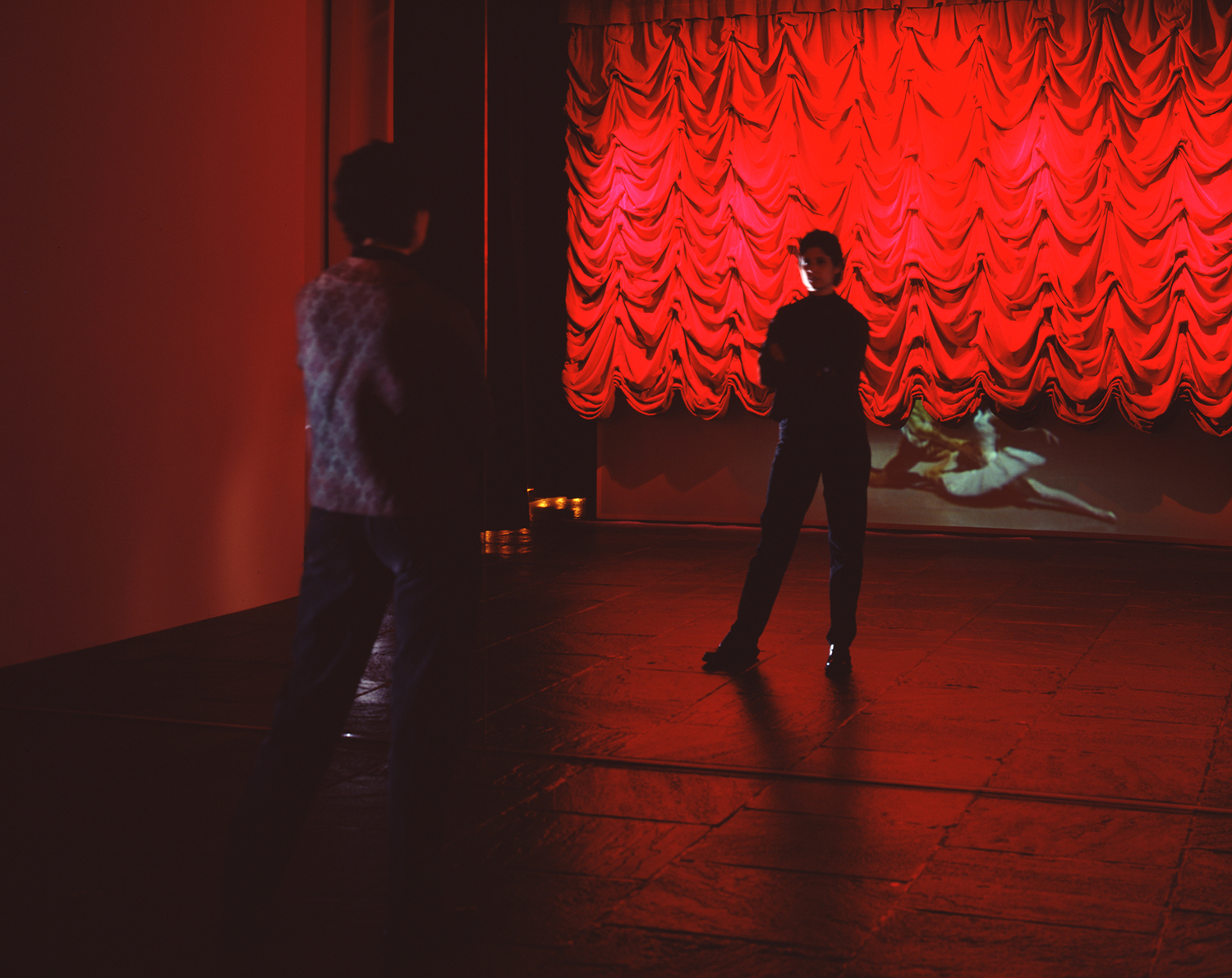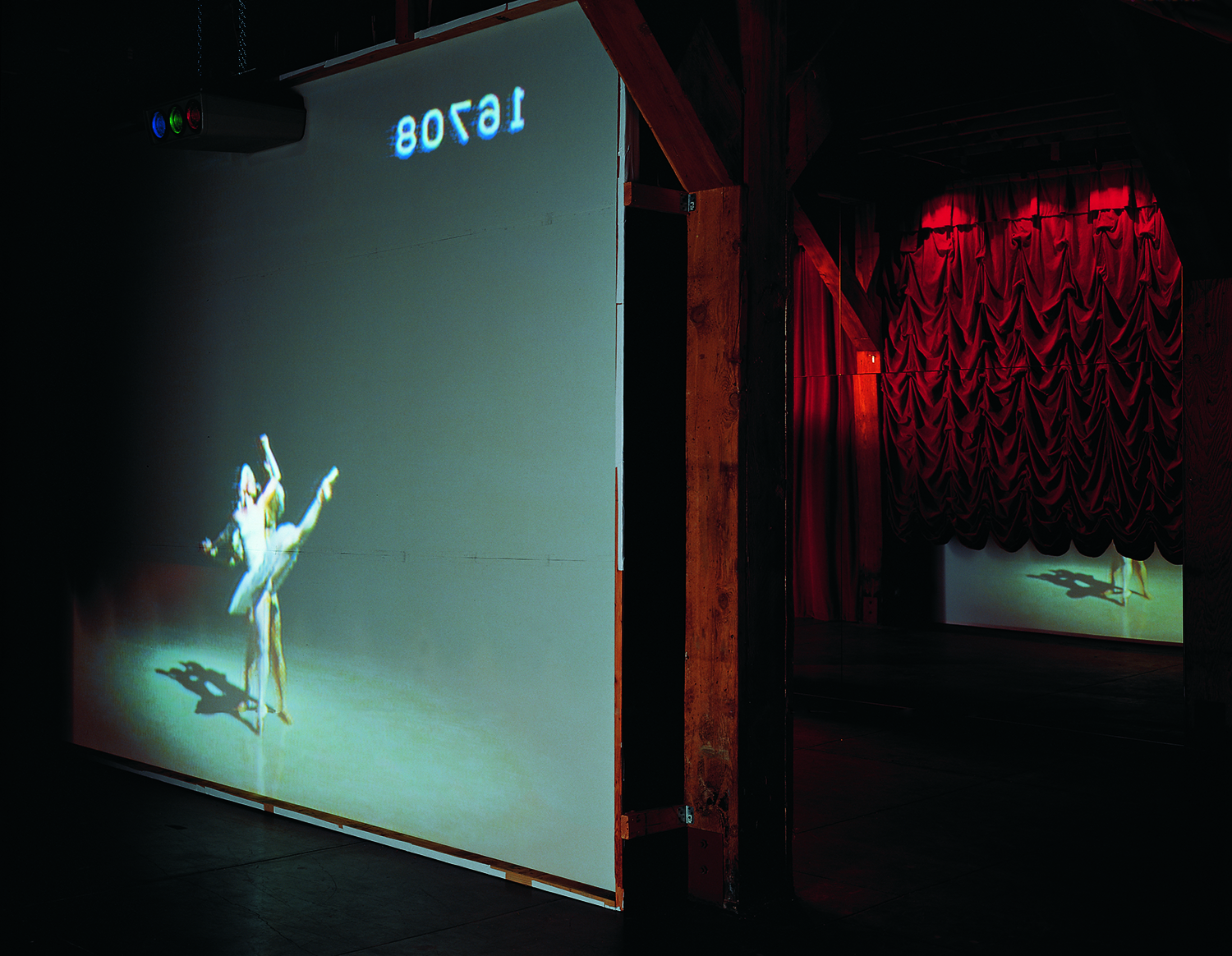


Janine Antoni
Swoon, 1997
Video installation
Speakers, curtains, laserdisc, mirror
Dimensions variable
Photographed by Ben Blackwell at Capp Street Project, San Francisco
Swoon is a multi-dimensional video installation involving projections, curtains, sound, and mirrors. An actual red, velvet, scalloped, curtain hangs in front of a video projection of two dancers performing the famous pas de deux from Swan Lake. The viewer unconsciously joins into the dance as they move through the installation.
As Mary Ceruti writes – “the hard sound of the ballerina’s toe shoes hitting the floor and the heaviness of her breathing reveal the laborious effort required to sustain the illusion of grace and extreme femininity. The curtain, the screen, and the music, all contribute to the illusion by veiling the reality and allowing us our fantasy…we are implicated not only as viewers (and voyeurs) but as performers as well.”
Below is the description of the viewer’s movement through the installation:
1. Viewers enter a roughly finished space that looks like the back of the stage set where they hear the sound of heavy breathing.
2. Curious about the sound, viewers enter the second chamber, and find themselves standing between a 16-foot video screen, and a mirror of the same size.
3. The screen reveals dancers performing—only their feet are visible as their image is half-obscured by a red velvet curtain. The scene is lit in such a way that viewers comprehend the actions of the dancers behind the curtain by the shape of their shadows.
4. The artist has combined different versions of the classic pas de deux from Swam Lake, choosing movements to accentuate the view of the dancers’ legs below the curtain.
5. Viewers stand between the curtained screen and the mirror. The reflection of the viewer blocks the image of the dancers. In an effort to see the dancers, the viewer engages in an unconscious dance while trying to get out of the way of the image in the mirror.
6. Wanting to see the full screen, viewers walk behind the curtain. In this third room, the dancers are revealed in full on the back of the same screen. There is a moment when the dancers change gender roles, which is only perceivable from behind the curtain.
7. From the back of the screen, viewers see the male dancer lifting the female dancer. From the curtained front of the screen, she disappears above the curtain.
8. In this third and last room, the mechanics of the installation are revealed: the image is reflected in a mirror and then onto the screen, the counter and titles are seen in reverse, and the projection and sound equipment are in plain view.
9. In the last room, the body of the viewer obstructs the projected image. A different viewer in the second room sees the shadowed silhouette of the viewer in the third room, mingled with the shadows of the dancers.
10. As viewers walk through the installation, they are never sure if they are in the audience, on stage, or backstage. The changing position of the viewer generates multiple and sometimes-contradictory readings of what is occurring in the work.
